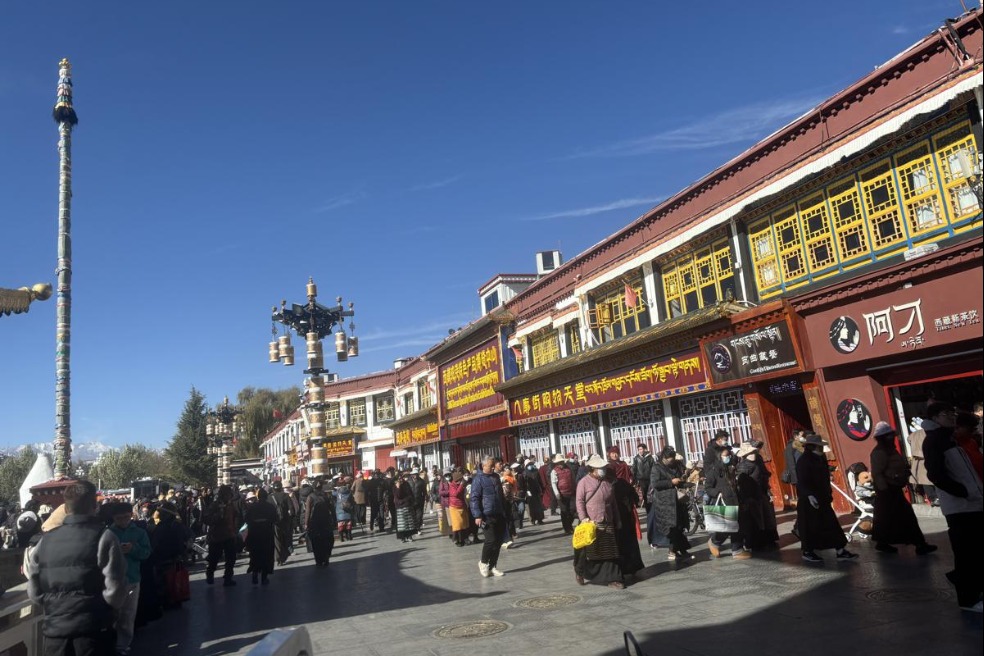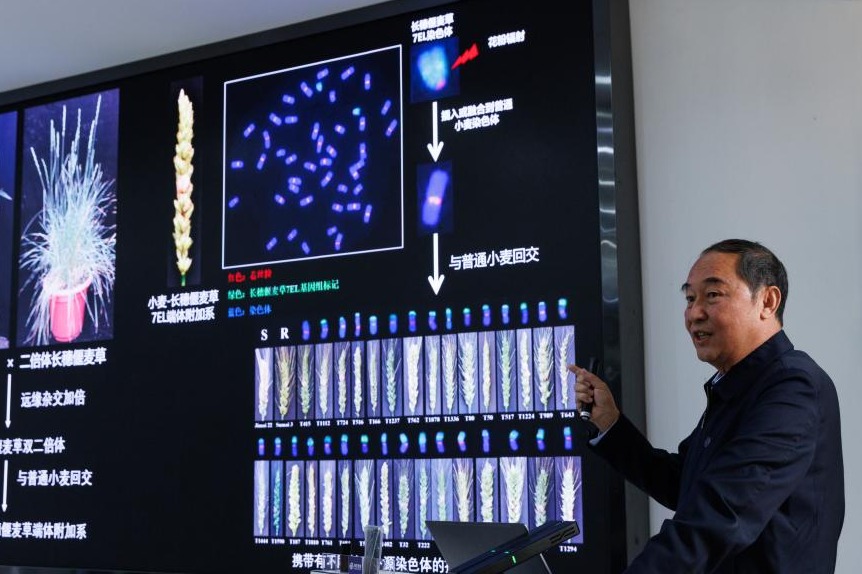Shenzhou XVII crew returns to Earth

The Shenzhou XVII mission crew returned to Earth on Tuesday afternoon, concluding a six-month mission onboard the Tiangong space station.
The Shenzhou XVII spacecraft's reentry capsule, carrying the three astronauts — mission commander Senior Colonel Tang Hongbo, Lieutenant Colonel Tang Shengjie and Lieutenant Colonel Jiang Xinlin — touched down at 5:46 pm at the Dongfeng Landing Site in the middle of the Gobi Desert in the Inner Mongolia autonomous region, after flying nine hours on the return journey.
Following safety checks outside the capsule, ground recovery personnel from the Jiuquan Satellite Launch Center opened the hatch of the bell-shaped vehicle and conducted a preliminary examination of the condition of the astronauts.
Sitting inside the capsule, Tang Hongbo told ground controllers in Beijing via radio that his team had landed and the crew members were "feeling pretty good".
The astronauts were then carried from the capsule and shared some thoughts with a China Central Television reporter. They said they were grateful to the motherland and generations of people involved in the country's space industry and will continue to strive for ensuing missions.
After the interview, they were transferred to medical-support vans for further examination.
The Shenzhou XVII spacecraft departed from the Tiangong station at 8:43 am on Tuesday and then started the atmospheric reentry procedure.
Before setting out on their return trip, the Shenzhou XVII team handed over their work to the Shenzhou XVIII crew and sorted and transferred materials between the station and their spaceship.
Tang Hongbo and his teammates, who are the sixth crew to inhabit Tiangong, took over the space station in late October from their peers in the Shenzhou XVI mission.
After this 187-day mission, Tang Hongbo has stayed in orbit a total of 279 days, extending his lead as the Chinese astronaut to have spent the longest time in space.
Tang made his first journey into space in June 2021 on the three-month Shenzhou XII mission, becoming one of the space station's first inhabitants. During that mission, he spent 92 days and four hours in orbit.
During the Shenzhou XVII mission, the crew conducted a total of 84 scientific experiments and technological tests in fields including life sciences, space medicine and new materials.
More than 200 pieces of samples that were obtained through these experiments and tests were sent back to Earth with the Shenzhou XVII vessel.
The astronauts also carried out two spacewalks that completed the first extravehicular repair operation for Tiangong, which accumulated valuable data and experience for the space station's long-term operation.
In the next six months, the Tiangong station will be manned by the Shenzhou XVIII trio, headed by Senior Colonel Ye Guangfu, who arrived at the colossal flying outpost on Friday morning.
One of the world's largest and most advanced spacecraft, Tiangong currently consists of three major components, the Tianhe core module and the Wentian and Mengtian science lab modules, and is connected to two visiting vessels, the Shenzhou XVIII crew craft and the Tianzhou 7 cargo ship.

Today's Top News
- Judicial reform critical for modernizing governance
- Effective use of investment emphasized
- China's shuttle diplomacy strives to reach ceasefire
- Nanjing Museum's handling of donated art, relics being probed
- Key role of central SOEs emphasized
- New travel program hailed as 'milestone'






























